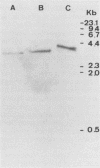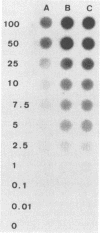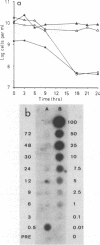Abstract
Cloned fragments of genomic DNA from the ruminal anaerobe Bacteroides ruminicola subsp. brevis B14 were isolated and used as hybridization probes to identify closely related bacterial species. One DNA fragment unique to strain B14 was tested to determine its sensitivity in detecting homologous sequences among total ruminal microbial DNA. In a DNA titration experiment, the probe was capable of detecting strain B14 sequences in vitro down to 0.1% of the total bacterial DNA present in a hybridization assay. There was no detectable signal for total ruminal bacterial DNA. The specificity of this DNA fragment was exploited to enumerate strain B14 in a fresh mixed suspension of ruminal bacteria in vitro and after inoculation of the strain into the rumen. In vitro strain B14 had a half-life of 9 h. However, following inoculation into the rumen there was a very rapid loss of the strain to below the detectable limit within 3 h. The half-life was less than 30 min. This loss was not due to ruminal dilution or to bacteriophage attack but was possibly the result of a specific bacteriocinlike activity present in the rumen and detectable in fresh ruminal fluid.
Full text
PDF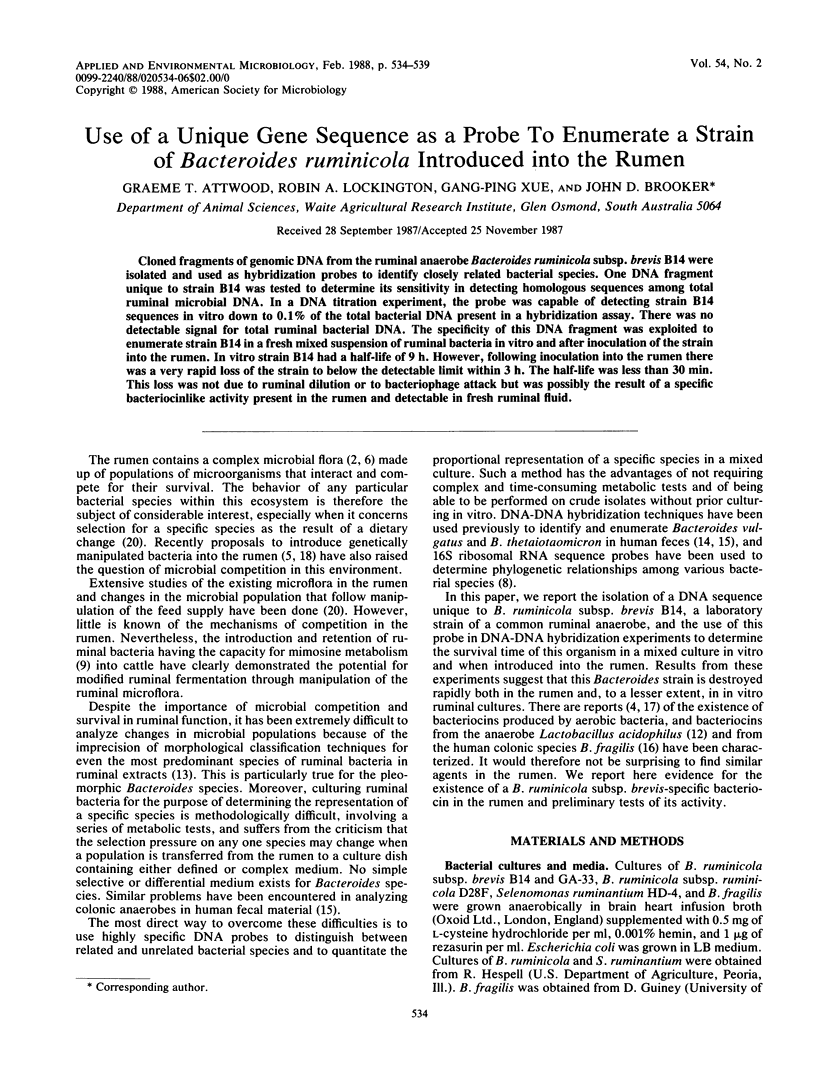
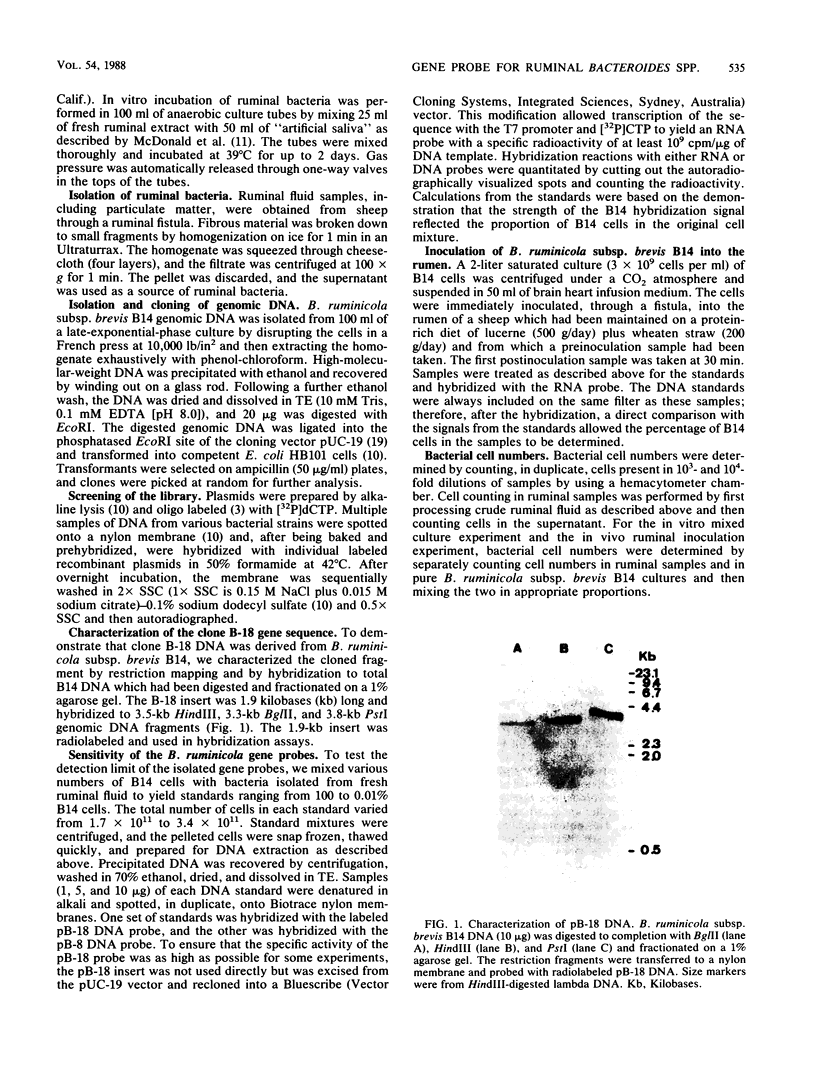
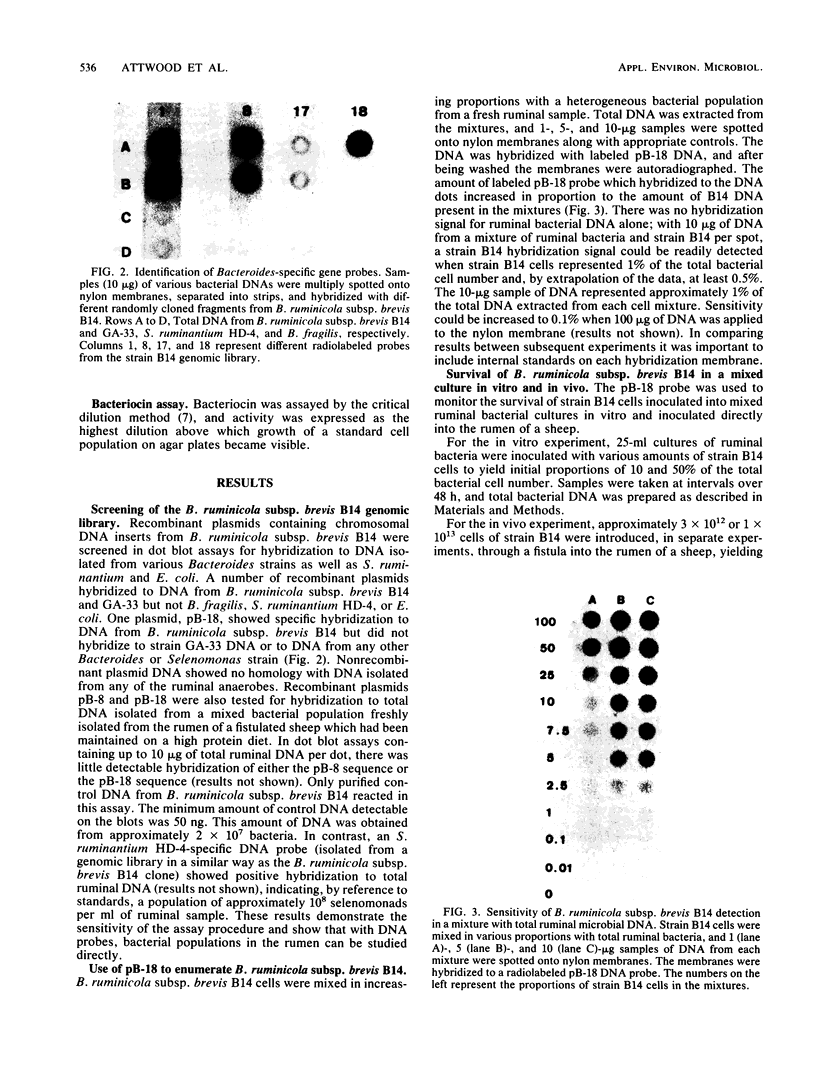

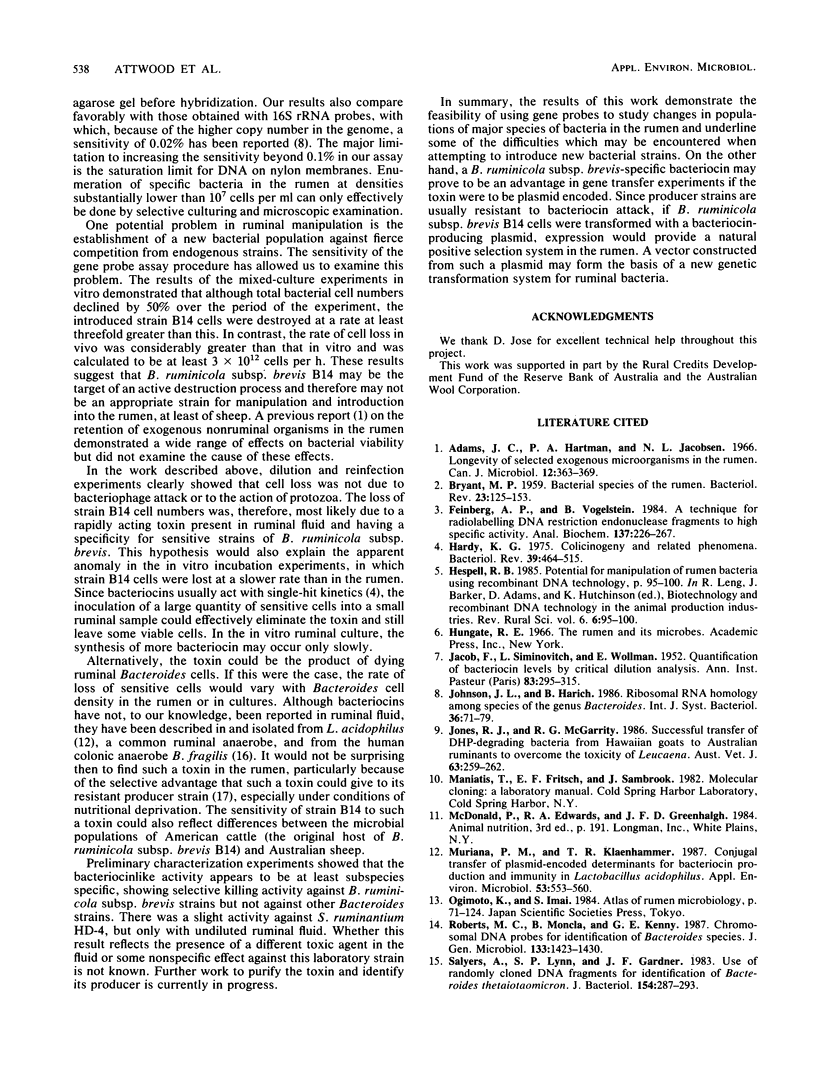
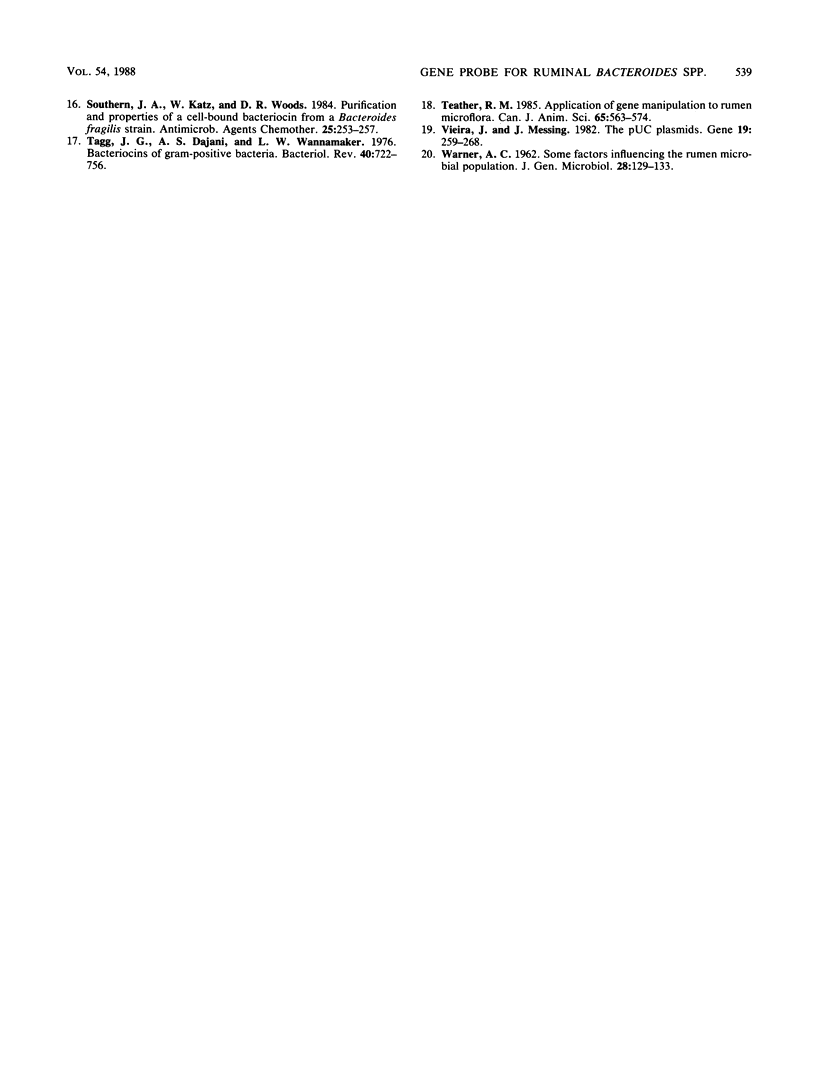
Images in this article
Selected References
These references are in PubMed. This may not be the complete list of references from this article.
- Adams J. C., Hartman P. A., Jacobson N. L. Longevity of selected exogenous microorganisms in the rumen. Can J Microbiol. 1966 Apr;12(2):363–369. doi: 10.1139/m66-049. [DOI] [PubMed] [Google Scholar]
- BRYANT M. P. Bacterial species of the rumen. Bacteriol Rev. 1959 Sep;23(3):125–153. doi: 10.1128/br.23.3.125-153.1959. [DOI] [PMC free article] [PubMed] [Google Scholar]
- Feinberg A. P., Vogelstein B. "A technique for radiolabeling DNA restriction endonuclease fragments to high specific activity". Addendum. Anal Biochem. 1984 Feb;137(1):266–267. doi: 10.1016/0003-2697(84)90381-6. [DOI] [PubMed] [Google Scholar]
- Hardy K. G. Colicinogeny and related phenomena. Bacteriol Rev. 1975 Dec;39(4):464–515. doi: 10.1128/br.39.4.464-515.1975. [DOI] [PMC free article] [PubMed] [Google Scholar]
- JACOB F., SIMINOVITCH L., WOLLMAN E. Sur la biosynthèse d'une colicine et sur son mode d'action. Ann Inst Pasteur (Paris) 1952 Sep;83(3):295–315. [PubMed] [Google Scholar]
- Jones R. J., Megarrity R. G. Successful transfer of DHP-degrading bacteria from Hawaiian goats to Australian ruminants to overcome the toxicity of Leucaena. Aust Vet J. 1986 Aug;63(8):259–262. doi: 10.1111/j.1751-0813.1986.tb02990.x. [DOI] [PubMed] [Google Scholar]
- Muriana P. M., Klaenhammer T. R. Conjugal Transfer of Plasmid-Encoded Determinants for Bacteriocin Production and Immunity in Lactobacillus acidophilus 88. Appl Environ Microbiol. 1987 Mar;53(3):553–560. doi: 10.1128/aem.53.3.553-560.1987. [DOI] [PMC free article] [PubMed] [Google Scholar]
- Roberts M. C., Moncla B., Kenny G. E. Chromosomal DNA probes for the identification of Bacteroides species. J Gen Microbiol. 1987 Jun;133(6):1423–1430. doi: 10.1099/00221287-133-6-1423. [DOI] [PubMed] [Google Scholar]
- Salyers A. A., Lynn S. P., Gardner J. F. Use of randomly cloned DNA fragments for identification of Bacteroides thetaiotaomicron. J Bacteriol. 1983 Apr;154(1):287–293. doi: 10.1128/jb.154.1.287-293.1983. [DOI] [PMC free article] [PubMed] [Google Scholar]
- Southern J. A., Katz W., Woods D. R. Purification and properties of a cell-bound bacteriocin from a Bacteroides fragilis strain. Antimicrob Agents Chemother. 1984 Feb;25(2):253–257. doi: 10.1128/aac.25.2.253. [DOI] [PMC free article] [PubMed] [Google Scholar]
- Tagg J. R., Dajani A. S., Wannamaker L. W. Bacteriocins of gram-positive bacteria. Bacteriol Rev. 1976 Sep;40(3):722–756. doi: 10.1128/br.40.3.722-756.1976. [DOI] [PMC free article] [PubMed] [Google Scholar]
- Vieira J., Messing J. The pUC plasmids, an M13mp7-derived system for insertion mutagenesis and sequencing with synthetic universal primers. Gene. 1982 Oct;19(3):259–268. doi: 10.1016/0378-1119(82)90015-4. [DOI] [PubMed] [Google Scholar]
- WARNER A. C. Some factors influencing the rumen microbial population. J Gen Microbiol. 1962 Apr;28:129–146. doi: 10.1099/00221287-28-1-129. [DOI] [PubMed] [Google Scholar]



